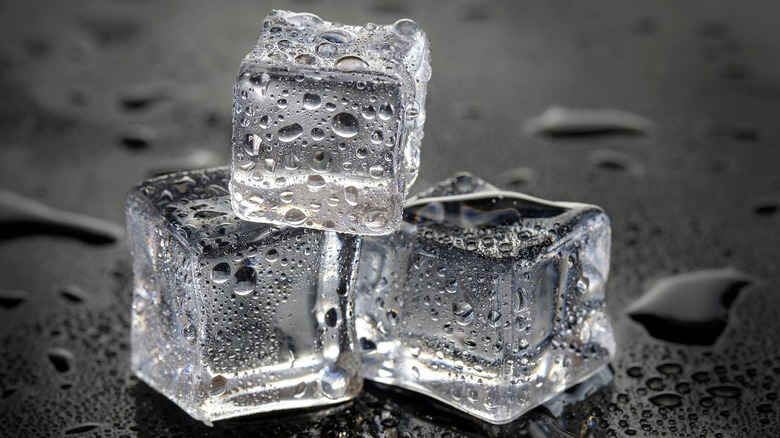Can You Use An Ice Pack To Treat Migraines And Headaches?
Headaches are a very common condition, with nearly half the global population experiencing them at one time or another over the course of a year (via the World Health Organization). In addition to that, half to three-quarters of adults worldwide, between the ages of 18-65, have experienced a headache within the last year and, of those, 30% were migraines.
Treating a headache is dependent first on knowing what kind of headache you have, according to the Mayo Clinic. There are a wide range of headaches, from tension headaches, to migraines, to chronic headaches that occur daily. The occasional headache can be treated with over-the-counter medications like aspirin, ibuprofen like Advil or Motrin, or acetaminophen like Tylenol. Migraines may require a prescription medication like Imitrex or Zomig.
However, in addition to the standard medications that your doctor may prescribe and recommend, there are some natural alternatives you can turn to as well. These include staying hydrated, taking magnesium, and avoiding foods that are high in histamine (via Healthline). You can also try an ice pack if you're feeling a headache coming on, but how effective is it?
Cold therapy for head pain can be effective
When a headache comes on, your first impulse may be to reach for the Tylenol in the medicine cabinet. However, a trip to the freezer may turn out to be a better bet. A 2013 study published in the Hawai'i Journal of Medicine & Public Health notes that migraines have been treated with cold therapy for more than 150 years. It is regarded as the number one method of self-care for migraines with no aura and the second-most employed for a migraine with an aura.
According to Healthline, the cold from the ice causes the blood vessels to constrict, which interrupts the transmission of pain signals to the brain. Instead of interpreting pain, your brain focuses on the cold. The study in the Hawai'i Journal of Medicine & Public Health also reported that 77% of patients reported a reduction in pain when a frozen wrap was placed on the carotid artery in the neck. Researchers believed this could be a result of the frozen wrap cooling the blood as it passed through the arteries.
How to use ice to combat headaches
If you are trying to treat your headache or migraine with an ice pack, the best practice is to apply the ice to the base of your skull for 15 to 20 minutes, then remove it for an hour (via Heathline). You should remove the ice pack when you begin feeling numbness to avoid damaging your skin.
You can also use heat to combat the effects of a migraine, with heat packs or even warm showers (via the National Headache Foundation). However, caution should always be used when using heat as a treatment. Showers and heat packs that are too hot can lead to muscle spasms and cause burns. Also, headache sufferers who opt for heat as a preferred treatment need to make sure they don't fall asleep with a heating pad on their skin. As far as placement goes, the National Headache Foundation recommends that cold packs be placed on the temples or forehead, while hot packs should go on the neck or the back of the head.
The best prevention and treatment for headaches and migraines is to stave them off before they even arise (via the Mayo Clinic). Eating regular meals, avoiding foods that can trigger migraines such as chocolate, caffeine, aged cheese, and alcohol, and exercising regularly are all ways to help keep headaches at bay. You should also manage your stress and consult your doctor to help develop a headache-thwarting plan that meets your healthcare and lifestyle needs.



